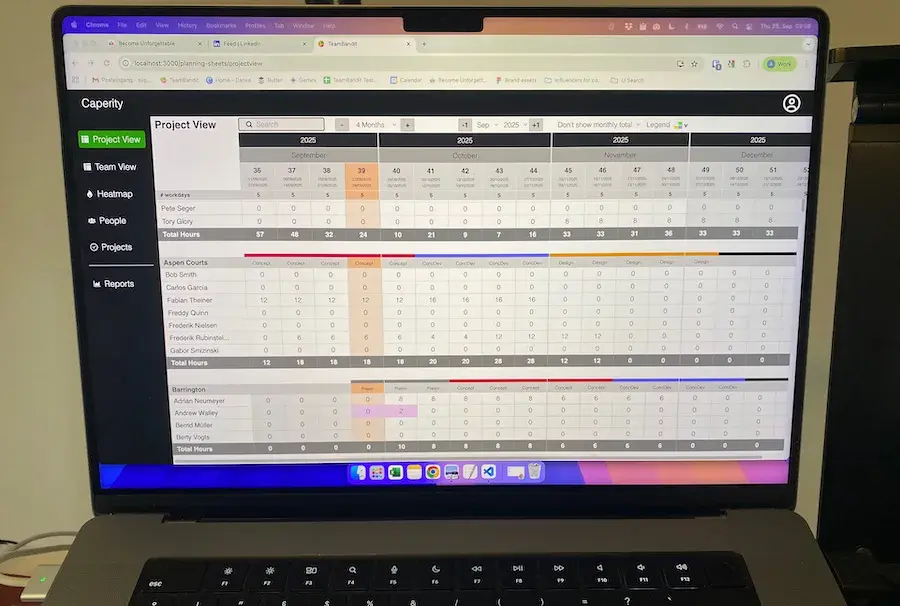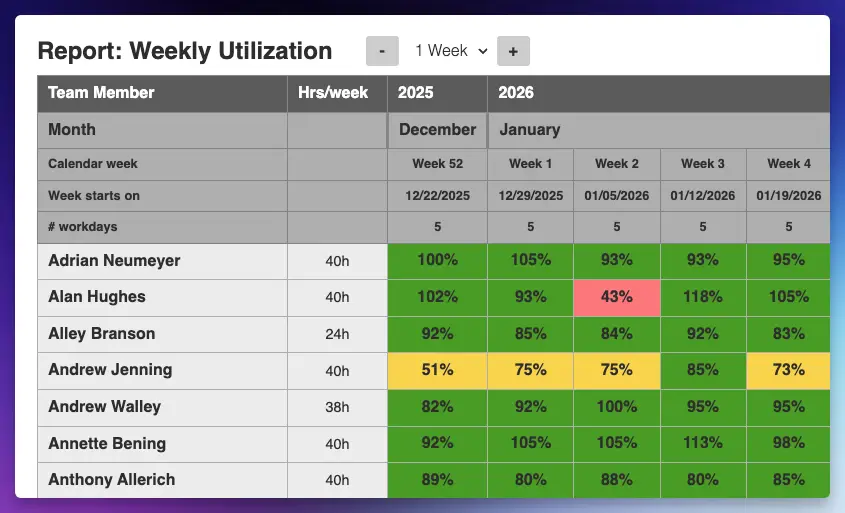Take it all away from me:
my project management tools
my computer
Being asked the popular question of what I’d take along into my exile on a remote island, these would be the things I could live without.
What I would still cling to: My phone and my project meeting structure. This would be the bare minimum of tools I’d need to make the project a success.
This may surprise you. And I think most people underestimate how important it is to have a meeting structure and to plan it early in a project. Having meetings in place can really be the lifesaver that decides between failure and success.
This article will help you find the right meeting structure for your project. I’ll also share the meeting structure I typically follow.
How a good meeting structure can help you
Betty, one of your junior team members, is doing coding work for your project. She is facing a problem that she doesn’t know how to solve. Jeff, one of your other team members who’s also attending the status meeting, is listening to Betty’s description of the issue. He has an idea: “Not sure how to solve that problem, but I know someone who can definitely help you. Talk to Robert from engineering. He is really an expert in this programming language. I can put you guys in touch”
Boom! Another issue solved and off your table!
My meeting structure explained
My meeting structure can be broken down into the following types:
- Regular team meetings
- Regular sub-team meetings
- Regular one-on-one meetings
- Ad hoc meetings (not really part of a meeting structure)
Let’s dive into each category:
Regular team meetings (entire project team)
I try to avoid meetings with the whole team and only schedule large group meetings very sparsely. They eat up a TON of time, and if you don’t keep people engaged, they will fall asleep. You can’t blame people because the topics are not always relevant to them.
That being said, a good cadence for meetings with the entire team is 4 to 6 weeks. These meetings are more updates from my side and we don’t talk about specific issues. Basically I give the team an outlook of what comes next and answer any questions.
As a rule of thumb, I recommend you schedule status meetings at the end of every project phase. Just look at your project timeline and see when a phase ends. Common project phases are concept phase, implementation phase, testing phase. If the concept of project phases is new to you, go check out my article about phases in project management .
Meetings with the entire project team
- status update
- project outlook – what are the next steps?
- discuss important organizational topics (e.g. upcoming business trip or workshop)
- team building activities
Regular team meetings (sub-team)
With every sub-team, I have regular meetings every few weeks. Sub-teams are responsible for a specific area or process (that’s why we also call them process team meetings).
For example, a meeting with my finance team or software developers. The typical cadence for those meetings is between 2 and 4 weeks. It depends on the importance of the area for the project and the number of issues the team is charged with.
What do we discuss in sub-team meetings? Usually, it’s conceptual topics. I as project manager want to know what solutions or ideas the team has come up with and how they plan to implement those ideas.
Example: The internal accounting team has been working on a request by the customer to track working hours of employees. I want to know how they intend to solve that request and I can give my opinion and share my advice with the team. My role is to shape the outcome by closely monitoring work results.
Regular meetings with sub team
- review progress for a specific area or process
- conceptual discussions
- discuss issues relevant to specific area
- look at workload and availability of team members and make adjustments if necessary
Regular 1:1 meetings
Every 1-2 weeks, I have a one-on-one with each of my team members. We look at the status of work and review any issues the colleague is facing. We also look ahead and plan our strategy for the next steps. There may be a workshop coming up and we need to decide how we are going to approach it, what question we ask the audience and so on.
Exception to the rule: I don’t have 1:1s with ALL team members. My most responsible and dependable team members don’t have to be managed so closely. They keep track of their own work and always meet deadlines. When they run into a problem, they are able to fix it themselves. And if not, they least come to me early enough so that I can help.
Use the time wisely and skip meetings if your people are doing their work well on their own. It will actually be demotivating for high achievers if you treat them like average people and micromanage work (here’s a great HBR article on managing your best employees)
Regular 1:1 meetings
- get status update on tasks assigned to team member
- provide guidance on work-related or personal issues
- give feedback
- individual coaching
Ad hoc meetings
My general approach to meetings is to have as few fixed meetings as possible and to schedule meetings on a need basis. This doesn’t mean I avoid regular meetings completely. I just want my team to have as much time as possible for actual work.
I schedule ad hoc meetings whenever there isn’t an issue that needs to be discussed in a group or when a decision has to be made quickly.
My ad hoc meetings generally last 30-minutes to 1-hour. Sometimes 2 hours, but that’s the exception. You’ll be surprised how much you can get done in a well-organized half-hour meeting!
Ad hoc meetings
- discuss issues or questions that have come up along the way
- make decisions
Planning your meeting structure
Here’s what you should do to define your project meetings:
Deciding Who you SHOULD meet with regularly
Always start with your list of stakeholders — the people who are working for you or who are affected by your project. Those people you need to meet and talk to on a regular basis. These are for example:
- your project team
- your client
- your project sponsor
- any vendors or service providers involved in the project
- important approvers like legal
Larger OR smaller meetings: WHAT IS BETTER?
Is there a benefit for inviting the whole team? Large meetings can be beneficial if it helps the team in solving their issues or answer their questions through collaboration. If a meeting does not provide that benefit, better organize a smaller 1:1 meeting.
THE RIGHT Cadence
Base your decision on the question of whether the cadence (or frequency) of meetings gives you enough control to steer things into the right direction if team members get stuck on their work.
The higher the frequency of meetings, the better your chances of recognizing problems early and getting them fixed before the deadline. A greater level of control, however, comes at a cost, because you rob your team members of their working hours.
Don't overthink it. Just schedule your meetings!
There is no perfect meeting structure, and I don’t want you to spend hours on your meeting plan.
Just set up a few meetings to stay in touch with your team and get to work. After a few weeks, refine your meeting structure based on how it has worked out in practice.
You might find that some meetings are unnecessary. For some people, you want more 1:1 sessions because they need to be managed more closely. You can also ask your team for feedback to see if they are happy if the meeting sequence.
One thing I recommend is to document your meeting structure in a communication plan and share this plan with the team whenever you approach a new project.
Lastly, make sure to schedule meetings as early as possible. People’s calendars fill very quickly and appropriately sized meeting rooms are scarce.
Do you have any questions?
I hope you found this article useful and got some ideas for planning your meetings. If you have any specific questions, post them in a comment below.
Author
-
Hi, I’m Adrian, a Senior Project Manager and the Creator of Tactical Project Manager, where I teach a pragmatic approach to project management. Led large-scale IT and business projects for over 10 years. My goal is to enable you to lead any project with confidence.
View all posts


